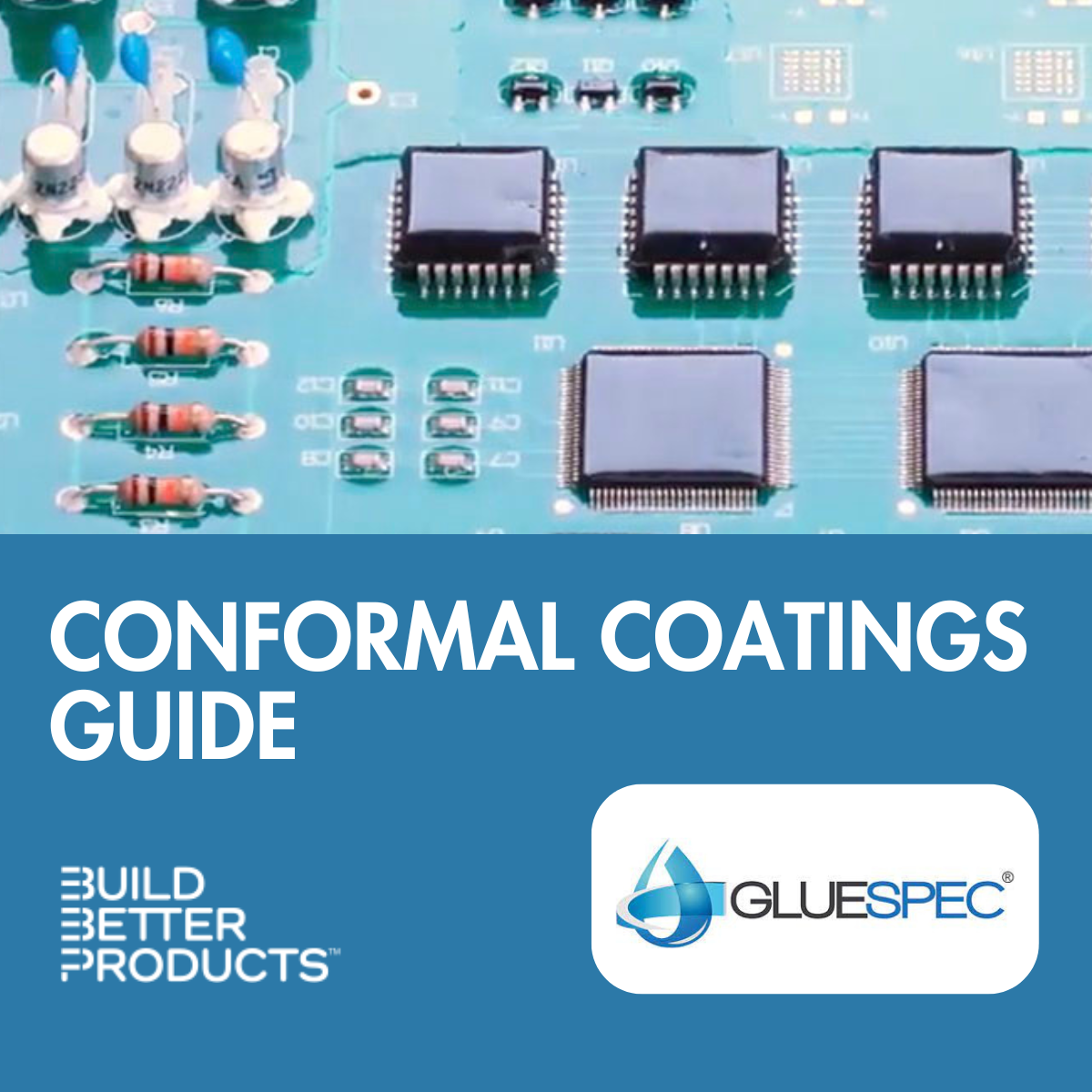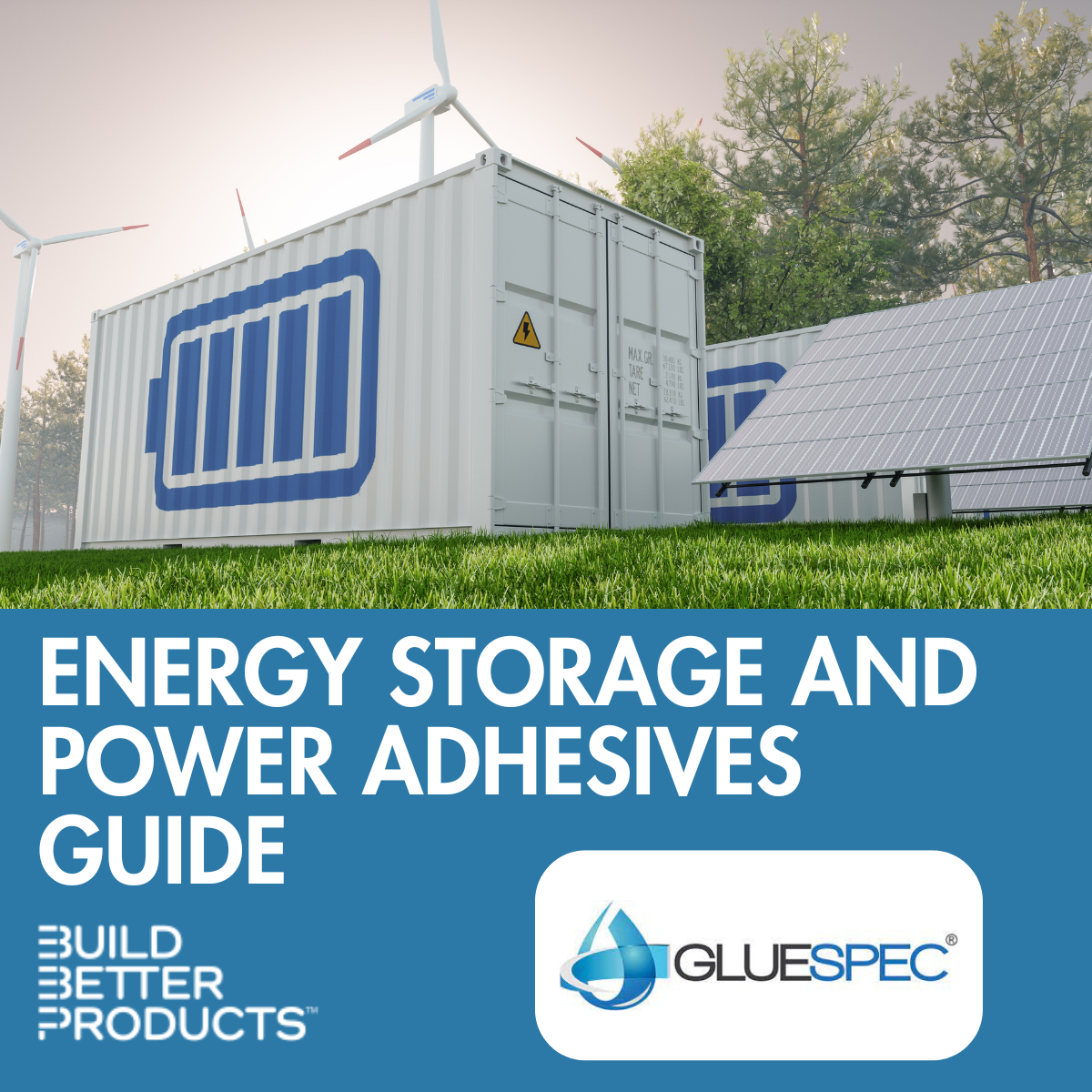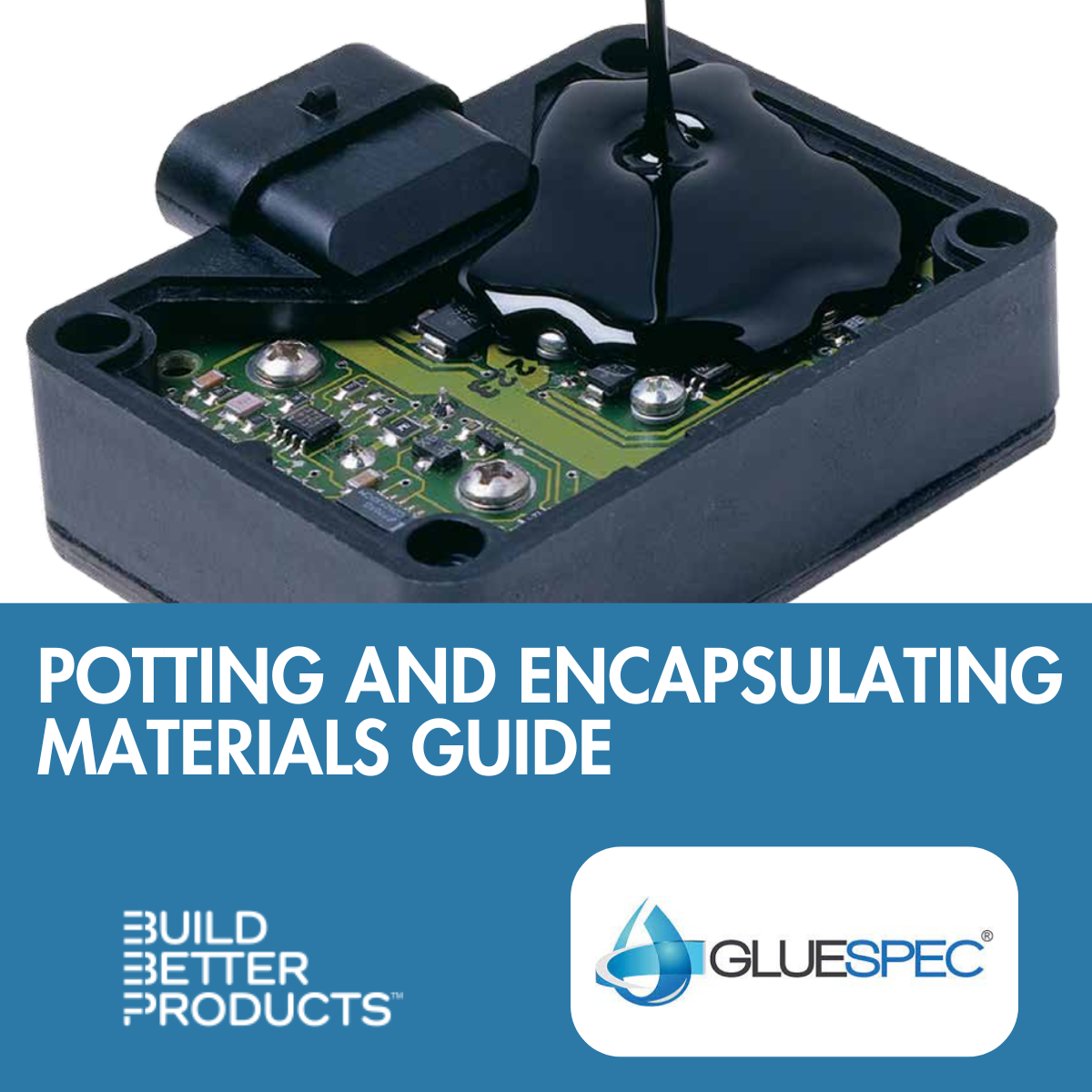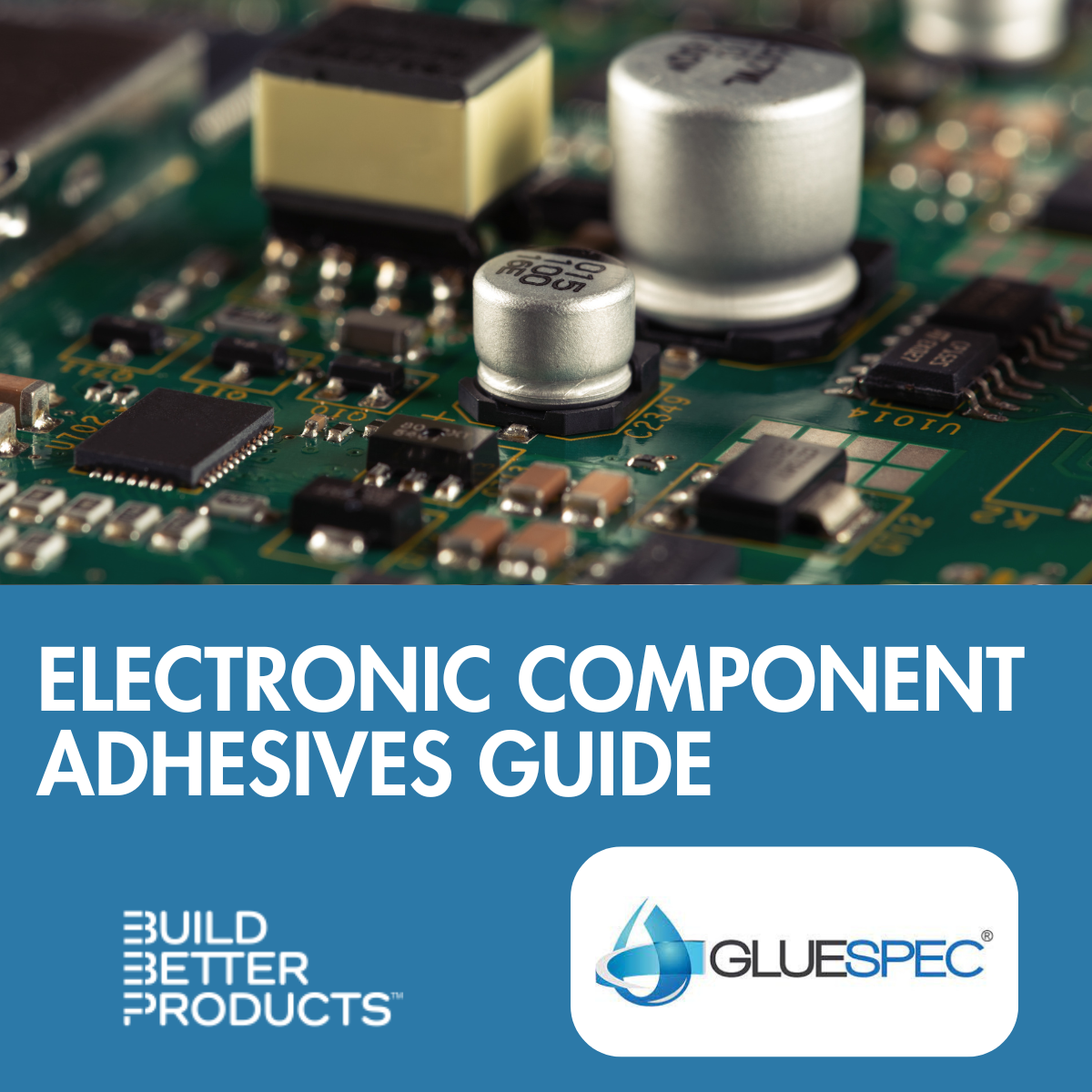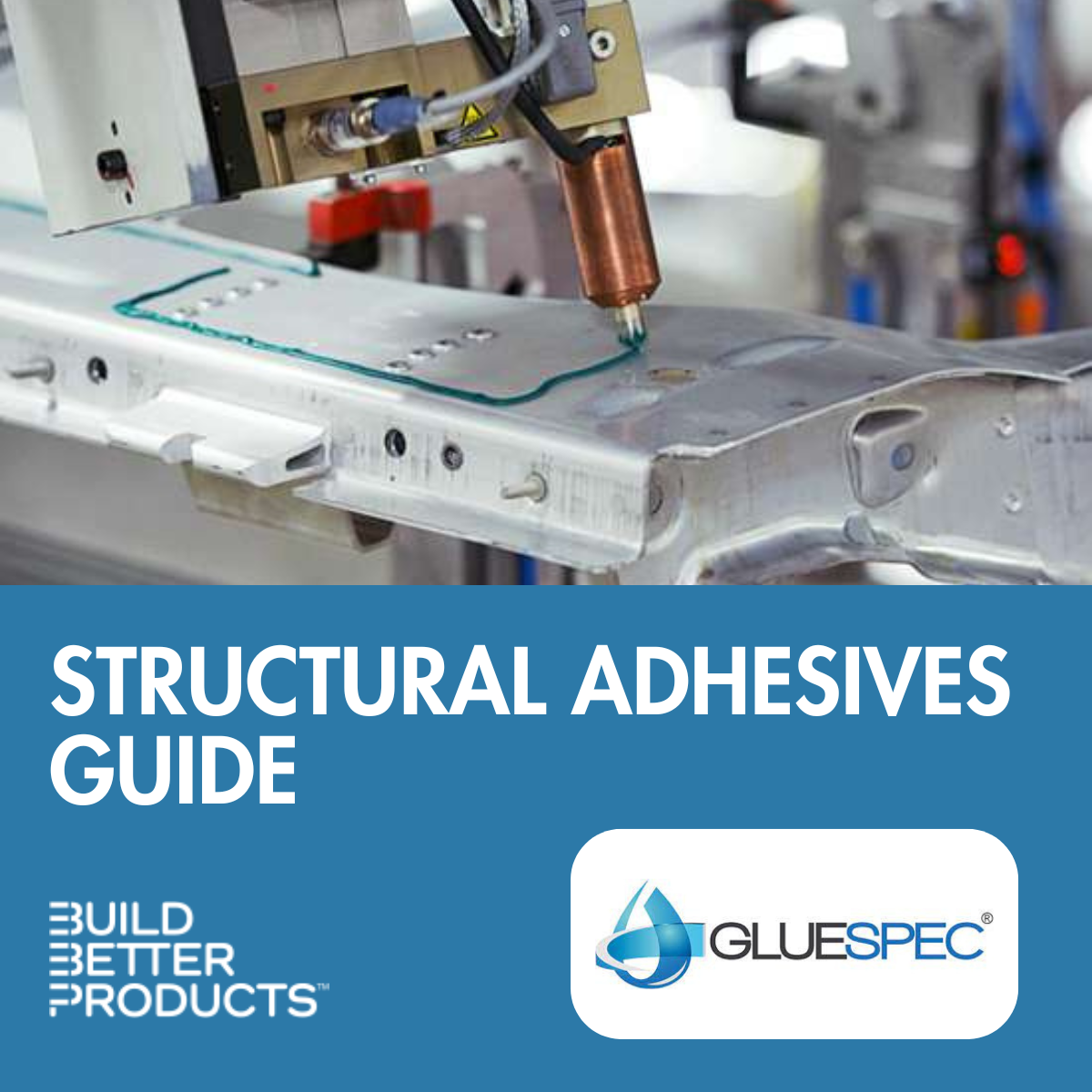

- Contributions by industrial experts with engineers in mind
- Focused on specialty-chemical material applications and selection
Knowledge Center
Instant Adhesives Guide
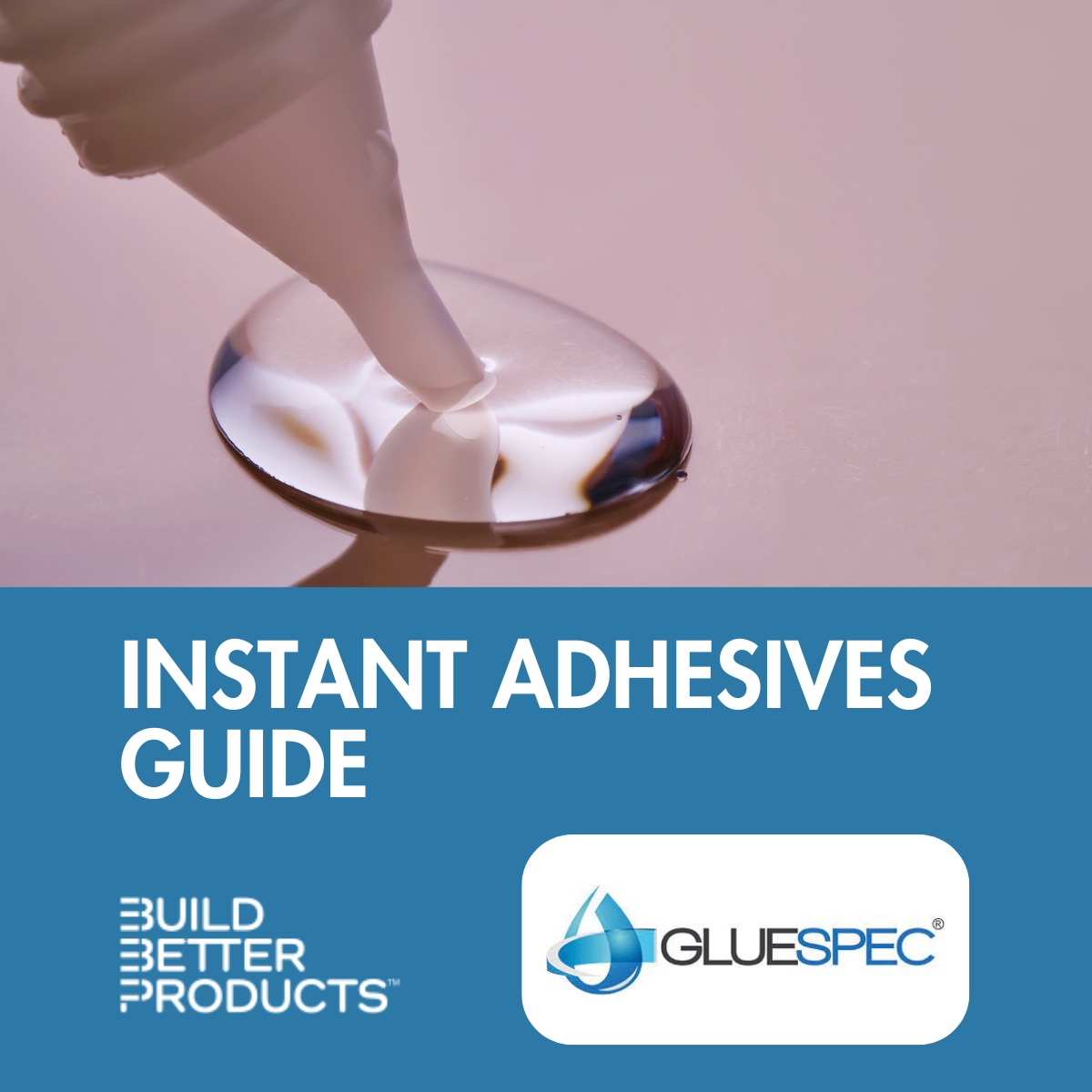
Listen to This Article
Instant adhesives bond quickly, but form bonds that can have up to more than two tons of holding power. Often, this strength is greater than that of the bonded materials themselves.
This guide explains what design engineers need to know about selecting instant adhesives, a category of materials you can find on Gluespec.
Gluespec’s comprehensive and quality-tested database of 35,000 adhesive materials includes the instant adhesives that design engineers need.
Along with technical data and key specifications, you’ll find best practices and comparable materials. You can also view test method information on dozens of material properties and data points.
Table of Contents
Instant Adhesives for Metal Bonding
Instant Adhesives for Plastic Bonding
Instant Adhesives for Rubber Bonding
Introduction
Instant adhesives are fast-acting, one-part adhesive. They are also as cyanoacrylates or "super glues", but instant adhesives with other chemistries are available. Among their advantages, instant adhesives provide ease of use and short clamping times.
Applications for instant adhesives include electronics assembly, but these engineered products are used with everything from medical devices and automotive subassemblies to jewelry and footwear.
Most instant adhesives are one-part products that cure by reacting with moisture, but some cure with ultraviolet light (UV) instead. There are also instant adhesives that use a dual-cure mechanism.
Types of Instant Adhesives
Gluespec divides instant adhesives into the following categories and makes it easy to search for them online.
• Instant Adhesives for Metal Bonding
• Instant Adhesives for Plastic Bonding
• Instant Adhesives for Rubber Bonding
The following sections describe each type of instant adhesive in terms of material and performance properties, set and curing times, applications and industries, key technical specifications, and general advantages and disadvantages. You’ll also find links to technical resources where you can find additional information, either in the Gluespec Knowledge Center or from other trusted resources.
Cyanoacrylate Adhesives
Cyanoacrylate adhesives (CA) are fast-acting, solvent-free adhesives that form strong, permanent bonds between substrates. They are made from cyanoacrylate monomers, which are small molecules that quickly polymerize (bond together) in the presence of moisture. These bonds are often so strong that it can be difficult to separate the two surfaces once they are joined together.
Cyanoacrylate adhesives can be used to bond a wide range of materials, including metals, plastics, rubber, ceramics, and glass. Although CA adhesives are easy to apply, it’s important to apply them thinly and with pressure on the bond for just a few seconds. Because CAs bond so quickly and do not require extended clamping, they can speed product assembly and repairs.
Despite their advantages, cyanoacrylate adhesives do not work well on substrates that are oily or have low levels of moisture. Some products can be brittle, which makes them unsuitable for applications that require flexibility. However, there are now flexible cyanoacrylate adhesives that also provide high bond strength.
When searching for cyanoacrylate adhesives, design engineers can choose either liquids or gels. The adhesive properties of these products are similar, but their viscosities and set times vary. This supports the distinctive advantages of each type of product, as the Instant Adhesive Gels and Instant Bond Adhesives sections in this guide will explain.
Applications
Applications for cyanoacrylate adhesives include:
• Automotive subassemblies
• Aerospace components
• Musical instruments
• Appliance part assembly
• Disposable medical devices
Products
These are some of the cyanoacrylate adhesives you'll find on Gluespec.
 |
102 from Permabond is one-part, general-purpose liquid that bonds substrates made of plastic, rubber, or metal. |
 |
Loctite 411 is a one-part gel that's formulated for excellent impact resistance and peel strength in gap filling applications. |
| VA 180 HT from WEICON is a one-part liquid that is odorless and fast-curing. It has a medium viscosity and high-temperature resistance. |
Tech Specs
Here are some of the technical specifications for cyanoacrylate adhesives.
|
Type |
Spec |
Definition |
|
Cure |
Cure Time (min) |
Cure time refers to the length of time needed for something to fully cure. |
|
Viscosity (cPs) |
Viscosity is a measure of a fluid’s resistance to flow. |
|
|
Bond Strength |
General Bond Strength |
The amount of adhesion between the bonded substrates. This is usually measured in pounds per square inch. |
|
|
Shear Strength (psi) |
The shear strength of a material is defined as its ability to resist forces that cause the material’s internal structure to slide against itself |
|
Other Properties |
Specific Gravity |
The ratio of the density of a substance to the density of some substance (such as pure water) is taken as a standard when both densities are obtained by weighing in air |
|
Flash Point |
The lowest temperature at which vapors above a volatile combustible substance ignite in air when exposed to flame. |
Resources
Here are some resources about cyanoacrylate adhesives you can find on Gluespec.
Instant Adhesive Gels
Instant adhesive gels, or gel-type adhesives, are high-viscosity solutions that are formulated to have a thicker consistency than liquid adhesives. This gel-like consistency makes these products easier to control and apply, particularly in vertical or overhead applications, or with porous surfaces.
By weight, instant adhesive gels are mostly liquid; however, they behave like a gel because of a three-dimensional cross-linked network within the liquid. This cross-linking within the fluid gives an instant adhesive gel its structure (hardness) and contributes to its adhesive stick (tack). During adhesive application, the texture of a gel-like product is different from a liquid adhesive.
Cyanoacrylate instant adhesive gels are made using the same basic chemistry as traditional liquid CA adhesives; however, gel adhesives also contain thickening agents, such as fumed silica, that give them their thicker consistency.
Although instant adhesive gels have many advantages, including suitability for some medical applications, they tend to form brittle bonds that break more easily under stress. They also have limited gap-filling ability because they are applied in very thin layers. Compared to liquid adhesives, however, instant adhesive gels can reduce cleanup times and improve bond line control.
Applications
Applications for instant adhesive gels include:
• Gasket attachment
• Small joint assembly
• Jewelry assembly
• Orthopedics and footwear
Products
These are some of the instant adhesive gels you'll find on Gluespec.
 |
Ultra Light-Weld 9-3095 Gel from Dymax is a one-part, solvent-free gel that cures with UV light. It bonds to fabric and porous surfaces. |
 |
Loctite 382 from Henkel is a one-part gel that contains special accelerators for instant curing. It's used in the electronics industry. |
 |
2011 from PermaBond is a solvent-free gel that's fast-setting and non-sagging. It's is suitable for use on vertical and porous substrates. |
Tech Specs
Here are some of the technical specifications for instant adhesive gels.
|
Type |
Spec |
Definition |
|
Cure |
Cure Time (min) |
Cure time refers to the length of time needed for something to fully cure. |
|
Viscosity (cPs) |
Viscosity is a measure of a fluid’s resistance to flow. |
|
|
Bond Strength |
Shear Strength (psi) |
The shear strength of a material is defined as its ability to resist forces that cause the material’s internal structure to slide against itself. |
|
Conductivity |
Dissipation Factor |
The dissipation factor is a measure of loss rate of energy of a mode of oscillation (mechanical, electrical, or electro-mechanical) in a dissipative system |
|
Dielectric Strength |
Dielectric strength is defined as the electrical strength of an insulating material. |
|
|
Dielectric Constant |
The dielectric constant is the ratio of an insulator’s capacitance to that of dry air. A dielectric constant of 10 means that the insulator will absorb 10x more electrical energy than air. |
|
|
Volume Resistivity (O) |
The ratio of electrical resistance through a cross-section divided by length through which current flows (ohms-cm) |
|
|
Other Properties |
Specific Gravity |
The ratio of the density of a substance to the density of some substance (such as pure water) is taken as a standard when both densities are obtained by weighing in air |
Resources
Here are some resources about instant adhesive gels you can find on Gluespec.
• Unique Advantages of Contact Adhesives
Instant Bond Adhesives
Instant bond adhesives are fast-acting liquids that can form a strong, permanent bond between surfaces in just a few seconds. They are applied in small amounts to one of the surfaces being bonded, and then the two surfaces are pressed together. Unlike some other types of instant adhesives, these products cure with both ultraviolet (UV) light and moisture.
Instant bond CA adhesives have the fastest curing and fixing times of all cyanoacrylate adhesives. In less than five seconds, near-instant bonding can be achieved with UV curing in applications where light can penetrate. If shadowing occurs, conventional CA moisture curing can be used for these darker areas. CA accelerators can also be used to further speed curing and fixing times.
The advantages of instant bond adhesives include ease of application, whether by hand or with automated dispensing equipment, including robotics. Their main disadvantage is that because they set so quickly and form such strong bonds, it may be difficult to reposition or adjust parts that are being bonded.
Applications
Applications for instant bond adhesives include:
• Aerospace
• Automotive
• Transportation
• Electronics
• Engineered wood
• Furniture and building components
• Industrial maintenance and repair
• Manufacturing
Products
These are some of the instant bond adhesives you'll find on Gluespec.
 |
Loctite AA 3105 from Henkel is a high-strength, liquid adhesive that can bond PVC to polycarbonate. It cures with UV light. |
 |
Multi-Cure 605 from Dymax is a one-part product that's available as a liquid or gel. It comes in different viscosities and can be used for bonding metal to glass. |
 |
910FS from Permabond is a one-part, low viscosity liquid that cures rapidly at room temperature when pressed into a thin film between parts. |
Tech Specs
Here are some technical specifications for instant bond adhesives.
|
Type |
Spec |
Definition |
|
Cure |
Cure Time (min) |
Cure time refers to the length of time needed for something to fully cure. |
|
Viscosity (cPs) |
Viscosity is a measure of a fluid’s resistance to flow. |
|
|
Set time (min) |
Set time is the time it takes to form an acceptable bond when two or more substrates are combined for an adhesive. |
|
|
Bond Strength |
Shear Strength (psi) |
The shear strength of a material is defined as its ability to resist forces that cause the material’s internal structure to slide against itself |
|
Impact Strength (psi) |
The impact strength of a material is defined as its capability to resist a sudden applied load or force. |
|
|
Conductivity |
Dielectric Strength (V/mil) |
Dielectric strength is defined as the electrical strength of an insulating material |
|
Other Properties |
Specific Gravity |
The ratio of the density of a substance to the density of some substance (such as pure water) is taken as a standard when both densities are obtained by weighing in air |
|
|
Flash Point |
The lowest temperature at which vapors above a volatile combustible substance ignite in air when exposed to flame. |
Resources
Here are some resources about instant bond adhesives you can find on Gluespec.
• Case Study: Creating Reliable, Corrosion-Free Bonds
UV Light Cure Adhesives
UV light cure adhesives are designed to cure or harden when exposed to ultraviolet (UV) light. They typically consist of a polymerizable resin and a photoinitiator. When the adhesive is exposed to UV light, the photoinitiator undergoes a chemical reaction, which initiates the polymerization or crosslinking of the resin, causing the adhesive to harden.
Unlike heat-cure adhesives, UV light-cure adhesives do not require energy-intensive ovens. Instead, lamps that produce specific wavelengths of light are used.
UV light cure adhesives are also free of solvents and available in one-part formulations that do not contain volatile organic compounds (VOCs) or require time-consuming mixing. Glass is a commonly used substrate material because it transmits light.
For design engineers, it’s important to consider that UV light cure adhesives are designed to cure at specific wavelengths that are measured in nanometers (nm). The lamps that are used are specified by size or cure area, spectral output or wavelength, and power in W/cm2. The key is to use a lamp with a spectral output and intensity that matches the requirements of the adhesive.
UV light cure adhesives can combine rapid cure times with high bond strength and minimal shrinkage. Adhesives that cure with only UV light may experience shadowing, but a dual cure mechanism can generally overcome this limitation.
Applications
Applications for UV light cure adhesives include:
• Architectural bonding
• Plastic bonding
• Automotive assembly
• Disposable medical devices
• Printed circuit board (PCB) encapsulation
• Shower doors, handles, and cabinets
• Flat panel displays and touch screens
Products
These are some of the UV light cure adhesives you'll find on Gluespec.
 |
E-Max 11070 from Dymax is a one-part, urethane acrylate liquid that can be dispensed and cured in-line for increased production speed. |
 |
Loctite AA 3105 from Henkel is a one-part, acrylated urethane liquid that can fill small gaps less than 0.25 mm. It resists water immersion. |
 |
UV7141 from Permabond is a UV-curable acrylic adhesive with a secondary anaerobic cure mechanism. It bonds mirrors and ceramic-coated glass. |
Tech Specs
Here are some technical specifications for UV light cure adhesives.
|
Type |
Spec |
Definition |
|
Cure |
Cure Time (min) |
Cure time refers to the length of time needed for something to fully cure. |
|
Viscosity (cPs) |
Viscosity is a measure of a fluid’s resistance to flow. |
|
|
Linear Shrinkage (%) |
Escape of volatile substances or chemical changes that result in volume decrease of contraction of the material. The amount of dimensional change during the curing process. |
|
|
Bond Strength |
Peel Strength (piw) |
Peel strength is a measure of the adhesive strength of two or more materials that have been bonded together. |
|
Hardness |
Elongation (%) |
The process of becoming or making something become longer and often thinner |
|
Other Properties |
Light Refractive Index |
A value calculated from the ratio of the speed of light in a vacuum to that in a second medium of greater density. |
|
% Solids |
The percentage by weight of the non-volatile matter in an adhesive |
Resources
Here are some resources about UV light cure adhesives you can find on Gluespec.
• In-Depth Questions and Answers on UV/Light Cure Adhesives
• Accelerate Your Electronics Production
Instant Adhesives for Metal Bonding
Adhesives for metal bonding are designed to create a strong, permanent bond between two metal surfaces, or sometimes between a metal and a non-metal surface. UV-curable adhesives are sometimes used for forming invisible bonds between metal and glass.
Although most instant adhesives for metal bonding are cyanoacrylates, design engineers can choose products with acrylic, epoxy, or polyurethane chemistries instead. Acrylic adhesives have good resistance to impact, shock, and vibration. Epoxy adhesives provide high strength and durability. Polyurethanes offer excellent resistance to harsh water and chemicals. They can also be used in harsh environments.
During product selection, it’s also important to consider requirements such as the type of metal or metals to bond. CA adhesives work well with reactive metals such as brass, copper, and stainless steel. It’s also essential to consider the load or stress to which the bond will be subjected, and environmental conditions such as exposure to moisture, water, high heat, or weather.
Applications
Applications for instant adhesives for metal bonding include thread locking, thread sealing, weld sealing, and gasketing. Anaerobic adhesives, which are sometimes called thread lockers, are one-part products that cure with active metal surfaces in the absence of oxygen in the bond line. Because of this lack of oxygen, anaerobic adhesives do not bond well to glass, plastic, or rubber.
Products
These are some of the instant adhesives for metal bonding that you'll find on Gluespec.
 |
Loctite 401 from Henkel is a one-part, liquid cyanoacrylate for difficult-to-bond materials that require uniform stress distributon and strong shear strength. |
 |
200 from Permabond is a one-part, liquid cyanacrylate with high viscosity and good flow control. It cures with atmospheric moisture and is solvent-free. |
 |
Cynergy CA6014 from Resinlab is a one-part, liquid cyanoacrylate. This solvent-free adheisve cures with moisture and has very fast cure speeds. |
Tech Specs
Here are some of the technical specifications for adhesives for metal bonding.
|
Type |
Spec |
Definition |
|
Cure |
Cure Time (min) |
Cure time refers to the length of time needed for something to fully cure. |
|
Viscosity (cPs) |
Viscosity is a measure of a fluid’s resistance to flow. |
|
|
Bond Strength |
Shear Strength (psi) |
The shear strength of a material is defined as its ability to resist forces that cause the material’s internal structure to slide against itself. |
|
Other Properties |
Specific Gravity |
The ratio of the density of a substance to the density of some substance (such as pure water) is taken as a standard when both densities are obtained by weighing in air |
Resources
Here are some resources about adhesives for metal bonding that you can find on Gluespec.
Instant Adhesives for Plastic Bonding
Adhesives for plastic bonding are designed to create a strong, permanent bond between two plastic surfaces, or sometimes between a plastic and a non-plastic material like glass.
Products with cyanoacrylate chemistry work well with many types of plastics, including polystyrene, acrylics, and ABS. Importantly, they also form strong bonds quickly.
Epoxy adhesives can also be used with polyethylene, polypropylene, and other polymers. Acrylic adhesives are used for bonding plastics like polycarbonate and PVC, and polyurethane adhesives are used for applications where flexibility is required.
During product selection, design engineers need to consider requirements such as the type of plastic to bond, the amount of surface energy, the load or stress to which the bond will be subjected, and environmental conditions.
Although plastic bonding adhesives are more convenient to use for joining than fasteners, some products may have limited resistance to heat or require specific clamping devices to fix the joint. Product designers may also need to consider the degree of electrical insulation that is required. Low surface energy (LSE) plastics are especially difficult to bond and may require surface treatments.
Applications
Applications for plastic bonding adhesives include:
• Medical and scientific instruments
• Housings and enclosures
• Electronic components
• Storage tanks
• Pipes and tubing
• Wire and cable
Products
These are some of the instant adhesives for plastic bonding that you'll find on Gluespec.
 |
Loctite 425 is a one-part, liquid cyanoacrylate that cures quickly and is used as a threadlocker for fasteners. |
 |
Zip Grip HV2200 from Devcon (ITW) is a one-part, liquid cyanoacrylate that cures at room temperature and provides extended temperature resistance. |
 |
Light Weld 429 from Dymax is a one-part, liquid cyanoacrylate for bonding clear plastics and glass. It's solvent-free. |
Tech Specs
Here are some of the technical specifications for adhesives for plastic bonding like ITW Devcon (ITW) Zip Grip HV2200.
|
Type |
Spec |
Definition |
|
Cure |
Cure Time (min) |
Cure time refers to the length of time needed for something to fully cure. |
|
Viscosity (cPs) |
Viscosity is a measure of a fluid’s resistance to flow. |
|
|
Bond Strength |
Peel Strength |
|
|
Conductivity |
Dielectric Strength |
Dielectric strength is defined as the electrical strength of an insulating material. |
|
Dielectric Constant |
The dielectric constant is the ratio of an insulator’s capacitance to that of dry air. A dielectric constant of 10 means that the insulator will absorb 10x more electrical energy than air. |
|
|
Hardness |
Flexibility |
The ability to bend easily without breaking |
|
Other Properties |
Light Refractive Index (RI) |
A value calculated from the ratio of the speed of light in a vacuum to that in a second medium of a greater density. |
|
Specific Gravity |
The ratio of the density of a substance to the density of some substance (such as pure water) is taken as a standard when both densities are obtained by weighing in air |
|
|
Flash Point (°F) |
The lowest temperature at which vapors above a volatile combustible substance ignite in air when exposed to flame. |
Resources
Here are some resources about adhesives for plastic bonding that you can find on Gluespec
• Plastic Bonding with Adhesives – Considerations Q&A
• Cyanoacrylates in Medical Devices
Instant Adhesives for Rubber Bonding
Adhesives for rubber bonding are designed to create a strong, permanent bond between two rubber surfaces and, sometimes, another material.
Fast-bonding cyanoacrylate adhesives work well with many types of rubber, including neoprene, nitrile, and silicone. Silicone adhesives are only used to bond silicone surfaces, but these adhesives provide good resistance to high temperatures and chemicals. Epoxy adhesives can be used to bond rubber to metal or to other materials. Contact adhesives bond rubber to itself or to other materials.
In addition to chemistry, selection criteria include the type of rubber to bond, the load or stress to which the bond will be subjected, the need for flexible joining or bonding, and environmental conditions (such as high heat) that could affect bond strength.
Applications
Applications for rubber bonding adhesives include:
• Carpentry
• Furniture making
• Shoe manufacturing
• Ceramic and plastic tile attachment
Products
These are some of the instant adhesives for rubber bonding that you'll find on Gluespec.
 |
Loctite 380 from Henkel has excellent peel, impact, and shear strength. This one-part liquid cyanoacrylate cures with humidity. |
 |
102 from Permabond is a general-purpose, low-viscosity product that's used in industrial, aerospace, and military applications. |
 |
CA6702 from Resinlab has a greatly reduced odor and is used for bonding dissimilar materials. It's used in military and industrial applications. |
Tech Specs
Here are some of the technical specifications for adhesives for rubber bonding.
|
Type |
Spec |
Definition |
|
Cure |
Cure Time (min) |
Cure time refers to the length of time needed for something to fully cure. |
|
Viscosity (cPs) |
Viscosity is a measure of a fluid’s resistance to flow. |
|
|
Bond Strength |
General Bond Strength (psi) |
The amount of adhesion between the bonded is usually measured in pounds per square inch. |
|
Shear Strength (psi) |
The shear strength of a material is defined as its ability to resist forces that cause the material’s internal structure to slide against itself. |
|
|
Impact Strength |
The impact strength of a material is defined as its capability to resist a sudden applied load or force. |
Resources
Here are some resources about adhesives for rubber bonding that you can find on Gluespec
• Urethane Adhesives for Sporting Goods Manufacturing
• Pros and Cons of Urethane, Epoxy, or Silicone Adhesives
Gluespec is Your Source for Instant Adhesives
Gluespec’s comprehensive and quality-tested database of 35,000 adhesive materials includes the instant adhesives that design engineers need. The materials and manufacturers in our database are not limited to specific suppliers, and data is quality-checked and updated as needed whenever new data sheets or product specifications are released.
If you need deep data on instant adhesives or other materials, you’ll find what you’re looking for in our proprietary adhesives database. Along with technical data and key specifications, you’ll find best practices and comparable materials. Design engineers can also view test method information on dozens of material properties and data points.
Finally, Gluespec’s Advanced Search provides the tools you need to conduct deep filtering among all material properties. The result is a customized grid that contains materials and data points that are specific to your project. Save custom grids for quick access and share them, along with this Instant Adhesives Guide, with your colleagues.

